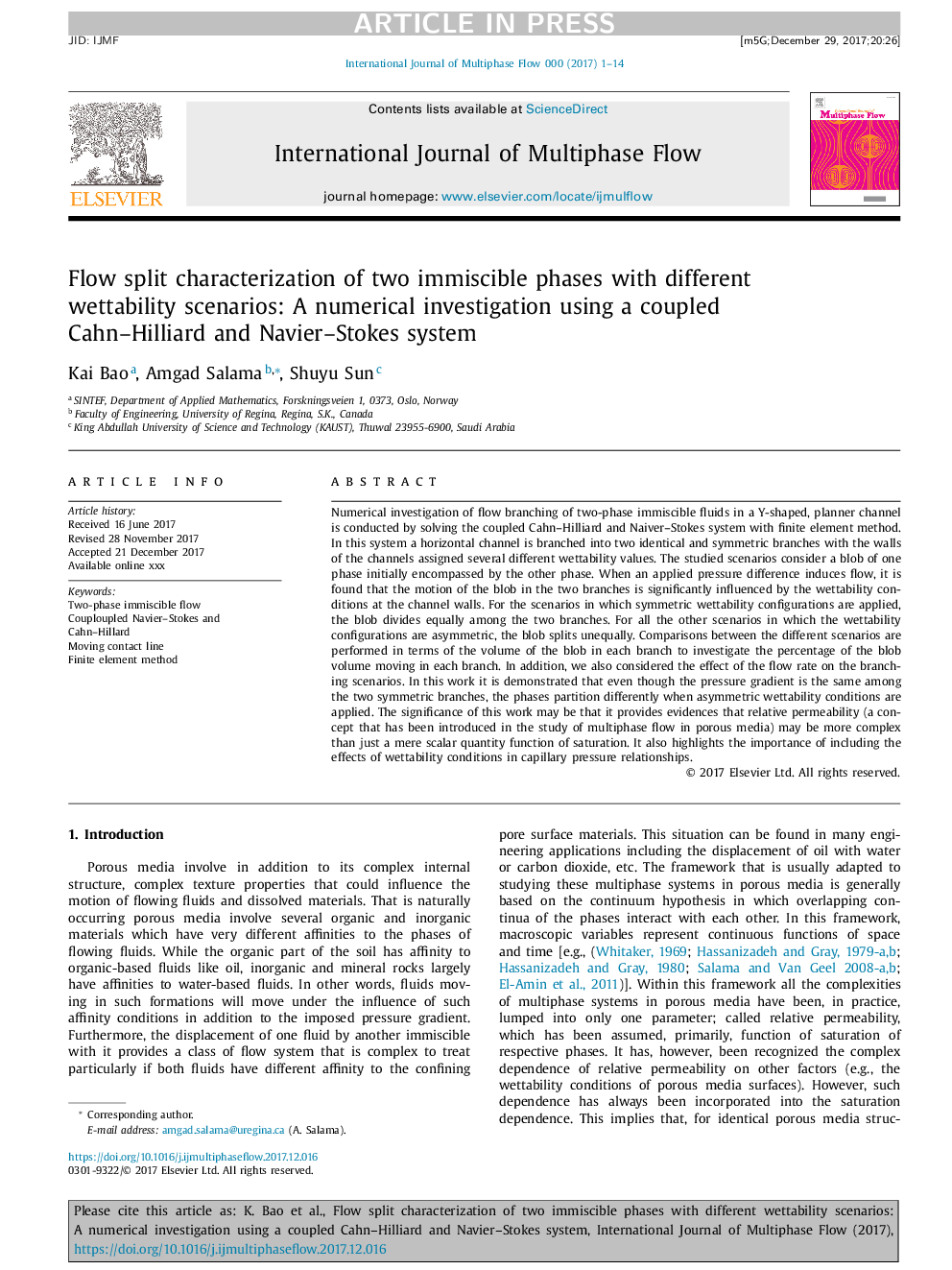| Article ID | Journal | Published Year | Pages | File Type |
|---|---|---|---|---|
| 7060168 | International Journal of Multiphase Flow | 2018 | 14 Pages |
Abstract
Numerical investigation of flow branching of two-phase immiscible fluids in a Y-shaped, planner channel is conducted by solving the coupled Cahn-Hilliard and Naiver-Stokes system with finite element method. In this system a horizontal channel is branched into two identical and symmetric branches with the walls of the channels assigned several different wettability values. The studied scenarios consider a blob of one phase initially encompassed by the other phase. When an applied pressure difference induces flow, it is found that the motion of the blob in the two branches is significantly influenced by the wettability conditions at the channel walls. For the scenarios in which symmetric wettability configurations are applied, the blob divides equally among the two branches. For all the other scenarios in which the wettability configurations are asymmetric, the blob splits unequally. Comparisons between the different scenarios are performed in terms of the volume of the blob in each branch to investigate the percentage of the blob volume moving in each branch. In addition, we also considered the effect of the flow rate on the branching scenarios. In this work it is demonstrated that even though the pressure gradient is the same among the two symmetric branches, the phases partition differently when asymmetric wettability conditions are applied. The significance of this work may be that it provides evidences that relative permeability (a concept that has been introduced in the study of multiphase flow in porous media) may be more complex than just a mere scalar quantity function of saturation. It also highlights the importance of including the effects of wettability conditions in capillary pressure relationships.
Related Topics
Physical Sciences and Engineering
Chemical Engineering
Fluid Flow and Transfer Processes
Authors
Kai Bao, Amgad Salama, Shuyu Sun,
